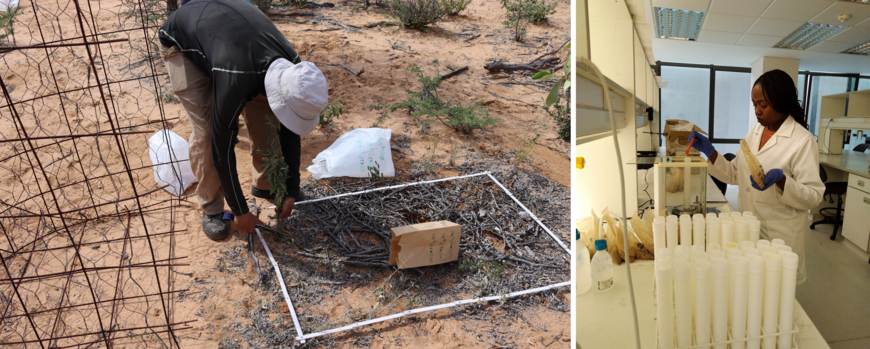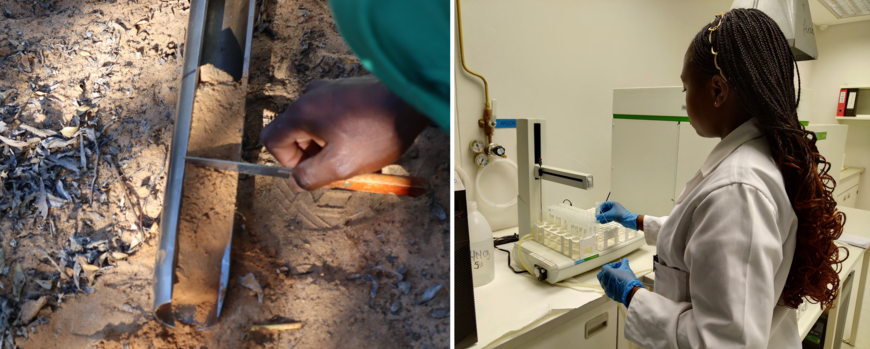August 2024: Restoration experiment - from field to lab!
One of the major indicators of desertification is the loss of perennial grasses in the rangeland. In order to curb the effects of degradation on the grasses in communal rangelands, farmers are encouraged to proactively apply various rangeland restoration management practices that include (not limited to) resting and reseeding of perennial grasses. These practices can ensure the survival of grasses over a long period of time even during drought periods. A 2-year restoration experiment was set up to assess whether these two techniques are effective in improving the vegetation (cover and quantity) and soil properties in the communal rangelands. After field data collection by PhD student Nali Moyo and Dr. Mark Bilton, with the support of local communal farmers, the harvested plant material was oven dried and re-weighed to determine the biomass accumulated in the two years (Figure 1). Furthermore, the soil samples were tested for any changes in their chemical properties and macronutrients by means of Inductively Coupled Plasma Optical Emission Spectroscopy (ICP-OES) (Figure 2), X-ray Fluorescence (XRF) and pH analyses. The results of this research will help us understand whether these two techniques are effective in promoting rangeland restoration and whether they could potentially be adopted by local communal farmers.


